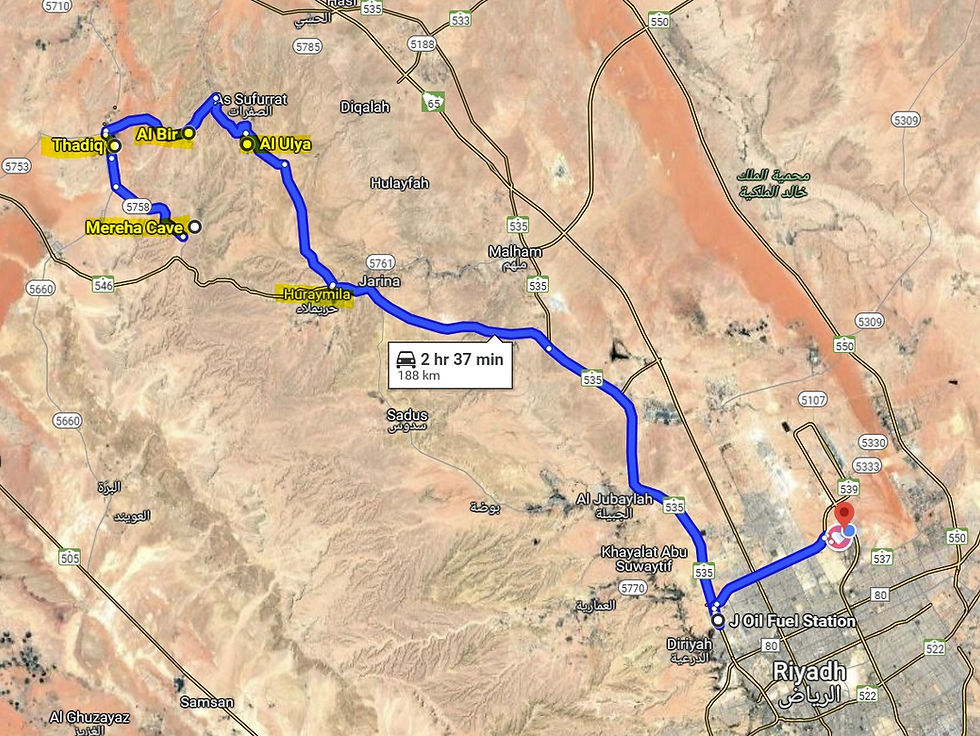Summer Solstice at an Ancient Dilmun settlement in the district of Saar, Bahrain.
- Hilary McCormack

- Jun 23
- 2 min read
Updated: Jun 25

June 21, 2025: The summer solstice truly feels enchanting when you come together with a group of history buffs, archaeologists, and fellow travelers amidst the remnants of ancient ruins to watch the sunset on the longest day of the year.
On June 21, summer officially began, and it was a beautiful, balmy evening in Saar for the annual astronomical event. The summer solstice marks the start of the longest season and the longest day of the year.

Under the guidance of Nabiel Al Shaikh, a Saudi archaeologist with the Saudi Antiquities Dept, part of Saudi Commission for Tourism and National Heritage (SCTH), we had the opportunity to connect with others who appreciate the history of this site and its role on this auspicious day.
This shared experience created a unique connection and wonder for the visiting group from Bahrain and Saudi Arabia, making the celebration even more memorable.

Irish man Alan Morrissey, a desert tourism explorer and expert based in Saudi Arabia, was part of the visiting group.
He stated, "This is my ninth time attending Nabiel's annual summer solstice gathering at Saar, and it’s always a fun yet educational opportunity to reconnect with local and regional history, as well as with like-minded participants who return year after year and have become old friends. Bahrain is constantly changing and developing, with the backdrop of the Saar archaeological site featuring a skyline of modern skyscrapers.
However, one constant remains: the setting sun on the 21st of June, which marks the (theoretical) end of the Dilmun year and prepares us to welcome the Dilmun New Year the following morning."

The archaeological findings at this site provide valuable insights into Dilmun society, revealing it as a mysterious yet cohesive civilization and a significant center for trade and knowledge—this rich network of connections extended from Mesopotamia to the Indus Valley as early as 5,000 years ago.

Mr. Al Shaikh suggested that the temple's location may have been dedicated to the Mesopotamian sun god Utu. It is believed that the village's people may have used the corner of the temple as a sundial for the solstice.

While some experts raise objection to this theory, the shifting sand beneath the foundations could explain why the alignment of the solstitial sun and the temple wall is actually off by 10 degrees.

This explanation seems more than reasonable to those of us who have lived in the region for many years and witnessed firsthand the relentless shifting of the desert sand.

The ancient settlement of Saar is the second most important archaeological site in Bahrain and is definitely worth a visit for the Summer Solstice of 2026. Bahrain News Article





Comments